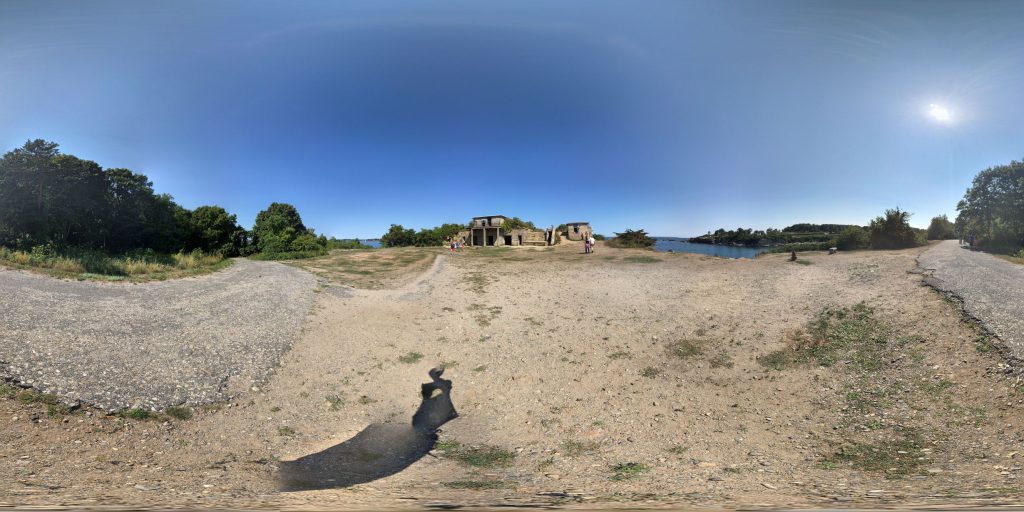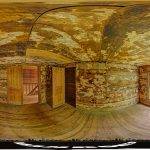Exploring the Historical Transformation of Fort Williams: From Military Bastion to Public Oasis
Discover the hidden gems of Fort Williams in Cape Elizabeth, Maine, a site rich with history and now transformed into a public park, eagerly awaiting exploration by urban adventurers like you. Picture yourself taking a captivating 360-degree tour around this once heavily fortified location, where every corner tells a story of its past. As an urban explorer, you’re invited to delve into the secrets of this historic site, now open for public enjoyment. Traverse the grounds where soldiers once marched, and uncover the layers of history embedded within these walls. This park isn’t just a journey through nature; it’s a portal into the past, offering an immersive experience that blends historical intrigue with the beauty of Maine’s landscapes. Fort Williams is more than a destination; it’s an adventure that beckons to those who seek to uncover the forgotten tales of urban landscapes.
Image by: Patrick O’Leary
Image by: Patrick O’Leary
Nestled in the charming town of Cape Elizabeth, Maine, lies a remarkable testament to the evolution of American military architecture and strategy: Fort Williams. This site, once a formidable military installation, has seamlessly transitioned into a serene public park, offering a compelling tale that captivates history buffs and urban explorers alike.
The Rise of Fort Williams: A Military Marvel
The saga of Fort Williams began in 1873 with the construction of the Battery at Portland Head. These initial earthworks fortifications marked the site’s first step towards military significance. However, a pivotal transformation occurred in 1892 with the introduction of concrete batteries, signaling a substantial enhancement in the fort’s defensive might. This change mirrored a broader national movement towards modernizing coastal defenses during the late 19th and early 20th centuries.
In 1899, the fortification was officially named Fort Williams, in honor of Brevet Major General Seth Williams. Gaining prominence as a key component of the Coast Defenses of Portland, it played an integral role in protecting Portland’s port and naval facilities.
World War II saw Fort Williams evolve into the hub of the Harbor Defenses of Portland. It hosted the 8th Coast Artillery Regiment of the Regular Army and the 240th Coast Artillery Regiment of the Maine National Guard. The fort’s focus gradually shifted from coastal defense to a logistical and administrative support role by 1945, reflecting the decreased threat to the East Coast.
Peaceful Transition and Closure
The fort’s military importance diminished after World War II. In the early 1950s, it briefly served as a radar station for the Air Defense Command but was soon reduced to a training site for the Air National Guard. The closure of Fort Williams in 1962 marked the end of its military era.
The Birth of Fort Williams Park
In 1964, the Town of Cape Elizabeth acquired the 90-acre property for $200,000, officially transforming it into Fort Williams Park in 1979. This conversion involved demolishing several dilapidated buildings, leaving behind various structures, concrete bunkers, and gun emplacements as solemn reminders of its military history.
A Modern-Day Sanctuary for Visitors
Today, Fort Williams Park is a beloved destination, attracting nearly a million visitors each year. It serves as a paradise for tourists, picnickers, hikers, bicyclists, and history enthusiasts. The park boasts numerous amenities, including tennis and basketball courts, a baseball diamond, picnic shelters, and a children’s garden. A highlight of the park is the iconic Portland Head Light, a historic lighthouse that enhances the area’s allure and historical value.
Preserving Fort Williams for Future Generations
The Friends of Fort Williams Park, a dedicated non-profit organization, ensures the park’s continued prosperity. They focus on preserving its natural beauty and enhancing visitor experiences through ecological gardening, educational programs, and maintaining the park’s accessibility.
Fort Williams in Cape Elizabeth, Maine, stands as a vibrant symbol of adaptability and transformation. Its journey from a strategic military site to a public park rich in history and beauty makes it an exceptional destination for anyone interested in the confluence of history and urban exploration.
If you liked this blog post, you might be interested in reading about Fort Jackson in Louisiana, the Coalhouse Fort in the United Kingdom or Fort Massachusetts in Mississippi.

A 360-degree panoramic image captured at the abandoned Fort Williams in Cape Elizabeth, Maine. Image by: Patrick O’Leary
Do you have 360-degree panoramic images captured in an abandoned location? Send your images to Abandonedin360@gmail.com. If you choose to go out and do some urban exploring in your town, here are some safety tips before you head out on your Urbex adventure.
Unlock the secrets of exploration by diving into precise GPS data available exclusively for an array of hidden gems and hundreds of other captivating sites, all within our members’ section. By investing in a Gold Membership, you’re not just gaining access; you’re securing a key to a vast, global archive of abandoned, untouched, and mysterious locations waiting to be discovered. Embark on your adventure with confidence, knowing every corner of the world can be within your reach. Don’t just observe—explore, discover, and claim the extraordinary journey that lies ahead with our treasure trove of world secrets. Subscribe now and transform the way you see the world!
If you want to start shooting 360-degree panoramic images, you might want to look onto one-click 360-degree action cameras.
Click on a state below and explore the top abandoned places for urban exploring in that state.






